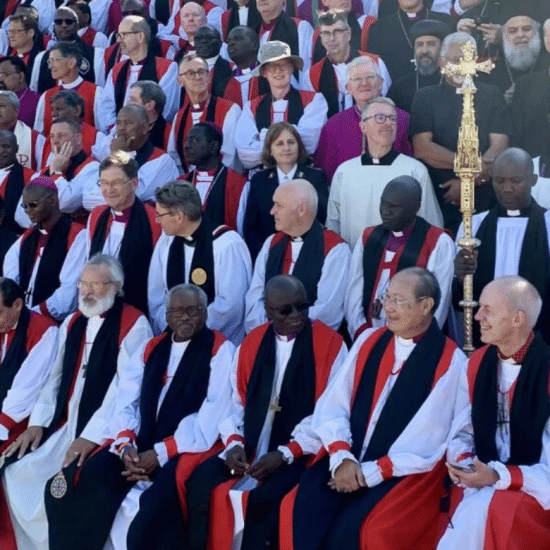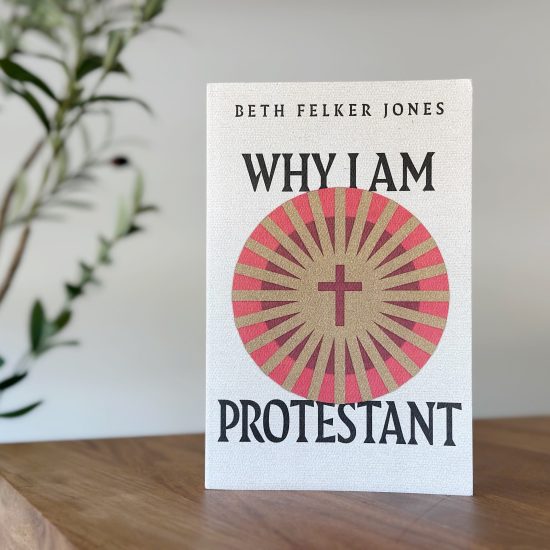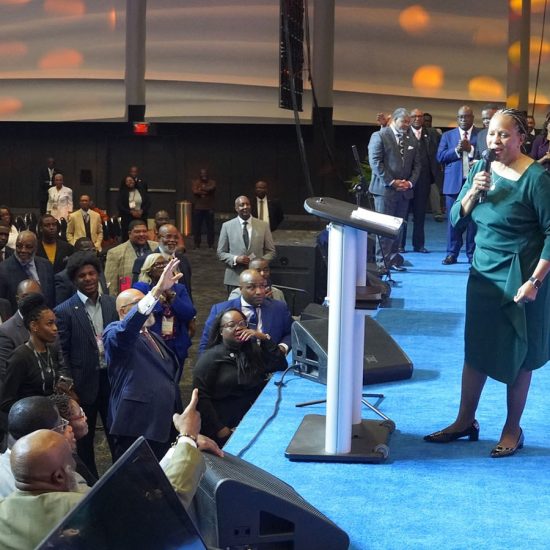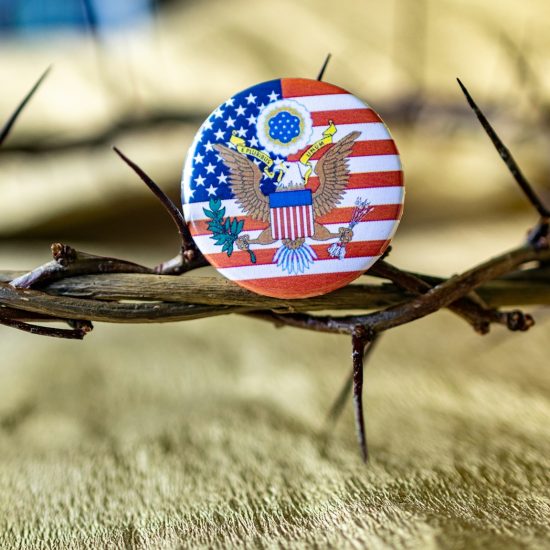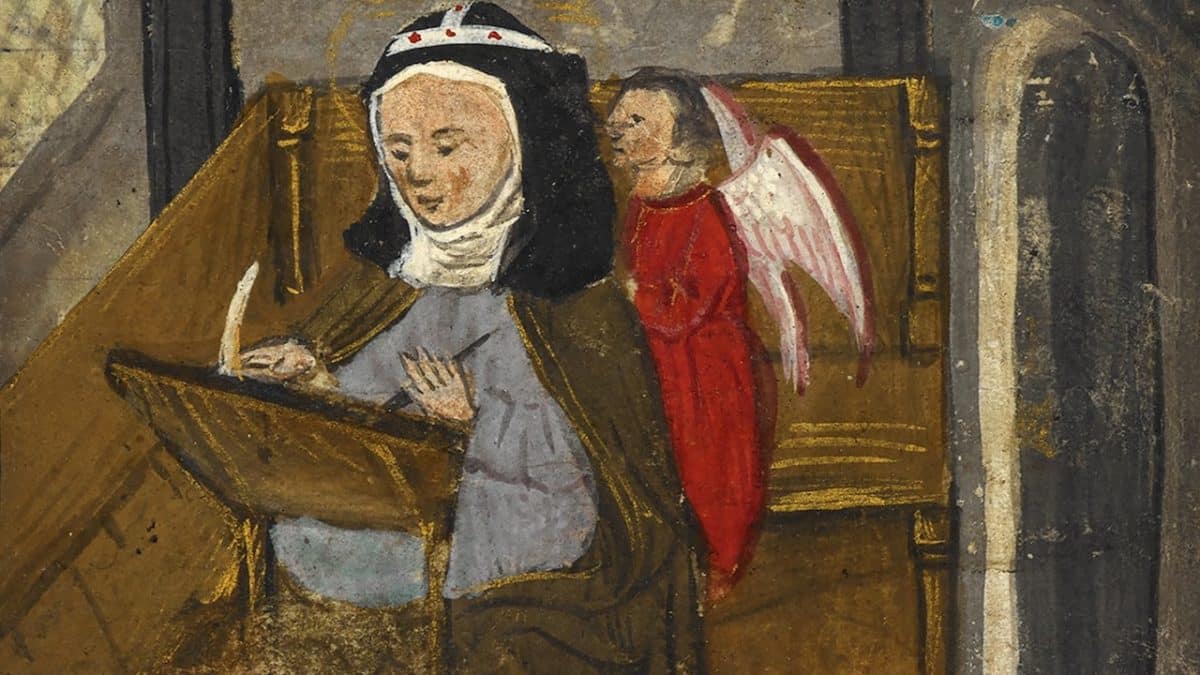
“History has its eyes on you.”
In the smash hit musical, Hamilton, George Washington reminds Alexander Hamilton that the actions they take in that moment will have lasting ramifications for generations. Over 200 years later, the statement rings true as we know the impact these men had on shaping our country. It is not often that women ministers, as normal everyday people going about our vocations, consider that we will be looked back at in church history as the foremothers. Yet here we are ladies. We are living in a historical moment and, yes, history has its eyes on us.

Sarah Blackwell
We are the first generations of married women, many with children, who are leading churches and other ministries on our own. When future Christians look back to see how this all started, it will be the names of our colleagues and friends that they point to as those who first navigated the waters of leading a church and serving as a wife or mothering a family at the same time. We are writing the next chapter in the Christian history books with our lives.
If the stories of women have been relegated to the margins of the biblical and Christian history texts, married women have lived hanging on the edge about to slip off. As Mary T. Malone writes in Women & Christianity, “Married women have not fared well in the Christian story — indeed with very few exceptions they have disappeared completely.” Occasionally, a married woman slips into the history books in the role of a mother to famous sons like St. Monica (Augustine), St. Helena (Constantine), or Susanna Wesley (Charles and John). They were critically important but not known for ministering outside their families.
We have historical examples of women bearing fruit in single-gender environments such as the desert mothers joining together in small communities of support. In addition, many women thrived in scholarship and communion with God through mysticism in the convents of the Middle Ages and Renaissance such as Hildegard of Bingen, Birgitta of Sweden (married but better known as a widow), and Teresa of Avila. Single women serving the church as missionaries and nuns have a long history, but as soon as a woman gets married, her story is often lost to the record. Sometimes women have their stories told but only as an accessory to a more famous husband like Ann Judson and her missionary work with Adoniram in Burma. She is important but not as a leader in her own right. Couples with a joint ministry have occurred in the past, but now we are seeing a new group arise: women ministers leading churches, chaplaincy programs, parachurch organizations, non-profits, academic departments, and missions sites without their husbands. These women, as wives and sometimes mothers, have a call that is truly their own and not their spouse’s. How will this new dynamic shape Christianity going forward?
For guidance in navigating these waters, we may be tempted to turn to the past. What we will find is a small handful of married women as ministers, mystics, and martyrs that we can look to as exemplars. One of my favorites has always been Priscilla from the Acts accounts. Here we have a married woman (often listed first in a position of prominence) who worked on seemingly egalitarian terms with her husband Aquila both as tentmakers and as apostles who traveled with Paul. The most interesting story about the couple is their mentorship of a fiery young preacher named Apollos in Acts 18. Apollos was ardent in his speech, but he did not yet know all about the death and resurrection of Jesus. Priscilla and Aquila provided dignity in his correction by taking him aside and working with him one-on-one rather than calling him out in front of the crowd. Together they taught the fundamentals of the faith and encouraged Apollos to go on traveling and spreading the gospel message. Their edification of him was key in the transmission of Christianity throughout the Mediterranean. I believe this story provides both a framework for egalitarian unions and the dignified mentorship of young believers.
In Luke, we also see mention of women who were traveling with Jesus as disciples such as Mary, the women who had been healed by Jesus, Joanna the wife of an important man in Herod’s government, and the mysterious Susanna (who must have been a recognizable name to the early followers, perhaps due to her means). We see Jesus bringing together diverse women, both single and married, from different walks of life to follow Christ in faithful community together. They are supporting the ministry financially through their own means showing the economic potential of generous women. Joanna, especially, gives us an early glimpse of a woman following her call despite her husband’s position.
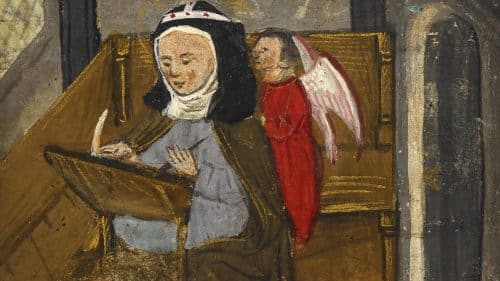
Bridget of Sweden, mystic and saint writing while an angel whispers in her ear. From the Fifteen Oes of St Bridget, Harley 2850, f.47v. Courtesy the British Library Board
In early church history, Tertullian gives the account of the martyr Perpetua (d. 203), who was not only married but had recently given birth. Her statement of Christian faith in the face of death was: “Stand fast in the faith and love one another.” We do not know anything about her husband; her story of leading by example holds its own place in history. Her diary about her imprisonment is the first writing by a Christian woman, and in it, we see her steadfastness and devotion. With her was Felicitas, who was arrested at eight months pregnant, and was allowed to live until her child could be delivered and given to her sisters to raise. These women sacrificed their family life for their faith in a bold way. Some today might even condemn them for not denying their faith for the sake of raising their children, but they answered to a higher authority as witnesses of the life-changing power of Christ.
Many of the women we know of throughout the medieval period were single nuns or mystics, but we do have the life story of Margery Kempe which runs counter to this trend. Margery Kempe wrote the first autobiography (The Book of Margery Kempe) in the English language in 1430 where she describes her spiritual encounters with the divine. Her mystical experiences and series of pilgrimages went against the norm for wives at a time when most of the records of similar occurrences were by chaste nuns. She provides one of the rare glimpses into life for a middle-class married mother during this period where women’s voices were often lost to history. Of course, her contemporaries viewed her as bizarre — a rare apparition of womanhood. Her commitment to her call in the face of opposition is an encouragement to us all.
While we may not have many role models from the past, there is a flourishing of women and their ministries at this moment in time. So, how is having married women leading ministries changing the dynamic of churches? What unforeseen benefits and challenges arise from female leadership? Whose call do you follow when two seminarians meet and marry? Are women still having their ministry play a secondary role to their husband’s? How are denominations that declare support for women in ministry following through on that claim? How are the boundaries that women set for family life impacting congregations? What do you need to be fruitful in your current context? If we are to be the generation of trendsetters, the new normal, the trailblazers, people need to know the stories. We need to hear the challenges and the beauty of the full flourishing of women’s spiritual giftedness in God’s creation. As we have seen this summer with the Southern Baptist Convention disavowing churches with female pastors, the struggle is far from over.
Thus, I would love to hear your story. If you are a married woman leading a church or other ministry, send me your stories at proxitytolove@gmail.com. I look forward to sharing these experiences in a future article.
This much I know: To reach the full flourishing of the kingdom, we must each accept the role that we are called to. For the first generation ever, more than half the population can actually say yes to the call. It is no wonder that so many talented women are filling our seminaries and divinity schools. And let’s face it — we need all hands on deck. As Malone explains in her book, throughout history, “‘Good’ women are consigned to the silence and invisibility of marriage.” It is time to redefine “good” and put words to the experience of living in the full fruitfulness of “mothering” both a family and a ministry. We will no longer be silent or invisible. The next chapter is ours to write.
Sarah Blackwell is a contributing writer at Word & Way and a 2020 graduate of the Gardner-Webb School of Divinity. She is an adjunct instructor in the Religion and Philosophy Department at Wingate University in Wingate, NC and a D.Min. student at McAfee School of Theology. She enjoys working with youth and young adults at Providence Baptist Church-Charlotte. She is a wife and mother to two sons, ages 15 and 12. Her intergenerational faith formation book, God is Here is available through Amazon and other online book retailers. Follow her writings at www.proximitytolove.org.

